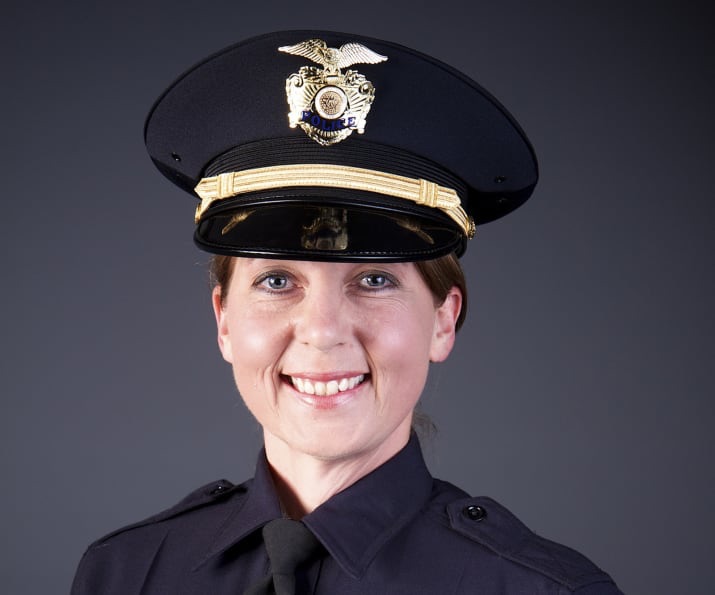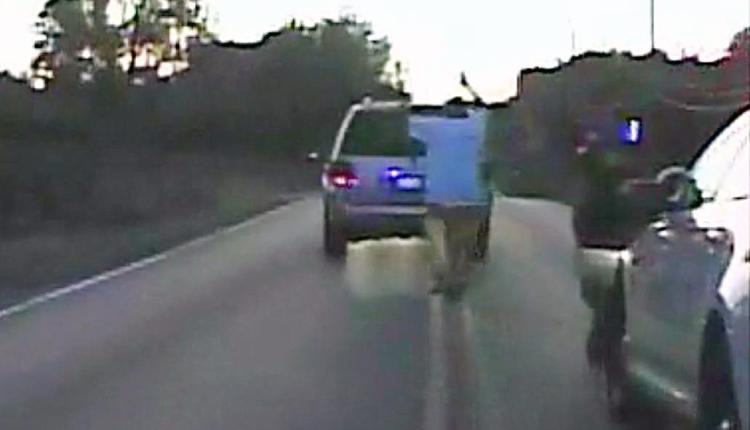If You Murder a Black Man, You're Qualified to be a Cop in Rogers County: Terrence Crutcher's Killer Gets New Job
/
From [HERE] The former white police officer who shot and killed an unarmed black man during a traffic stop in Tulsa, Oklahoma, was sworn in on Thursday as a reserve deputy in a nearby county.
Betty Shelby, a white woman, resigned from the Tulsa Police Department on July 14, two months after a mostly white jury found her not guilty of manslaughter for the death of Terence Crutcher.
"I certainly feel like we hit the lottery with this deal," Rogers County Sheriff Scott Walton, who publicly backed Shelby in her trial, said at a news conference. Walton, who apparently held a press conference to make the monumental announcement is also white.
When asked what the typical responsibilities of a reserve deputy (a role which is unpaid, but carries a firearm) would be, Walton replied: "Identical to anything that a full-time police officer that is paid or compensated for their duties will be."
When Shelby left the police department in July, she wrote in her resignation letter that “I pray [to my white God and his white son] for healing for his family, I will continue to pray for the unity of our community, the safety of our citizens and our police officers,” she added. Before the jury’s decision in May, Shelby had been on unpaid leave since prosecutors charged her with first-degree manslaughter in September. (The white cop was reinstated to her police post shortly afterward and awarded more than $35,000 in back pay for time missed from work during the investigation.) She said "sitting behind a desk, isolated from my fellow officers and the citizens of Tulsa, is just not for me." She desired to be back on the streets to resume her genicidal role killing niggers. [MORE]
Shelby’s case was also unusual for her decision to appear on 60 Minutes in the weeks ahead of her trial, a move both criticized as a skewing of public opinion and acknowledged as tactically savvy. What is white collective power?

Reaching High For an Imaginary Gun in the Sky. [Racists Cannot See Things As They Are]. Terence Crutcher was empty-handed next to his vehicle when Shelby fired a single shot that killed him. Police cameras captured the final moments of the 40-year-old’s life from multiple angles, showing he had been walking slowly with his hands high above his head during the moments before the killing.
A jury decided last month that it could not convict Shelby of manslaughter in the case despite the video evidence. Defense attorneys persuaded jurors that Crutcher had made a move toward the open driver’s-side window of his stationary vehicle, and that Shelby’s decision in that moment to kill him was justified by what she perceived to be a reach for a gun that did not exist.
In a public letter after the trial, however, jurors indicated they believed Shelby’s actions were rash and Crutcher’s death was avoidable — just that none of what transpired satisfied the technicalities of the law they’d been asked to apply to the officer.
At 7:36 p.m. on September 16, 2016, police received a 9-1-1 call from a racist suspect about an abandoned vehicle in the middle of 36th Street North just west of Lewis Avenue. One racist suspect caller said: "Somebody left their vehicle running in the middle of the street with the doors wide open." "The doors are open. The vehicle is still running. It's an SUV. It's like in the middle of the street. It's blocking traffic." "There was a guy running from it, saying it was going to blow up. But I think he's smoking something. I got out and was like, 'Do you need help?'" "He was like, 'Come here, come here, I think it's going to blow up.'" The other racist suspect caller said: "There is a car that looks like somebody just jumped out of it and left it in the center of the road on 36th Street North and North Lewis Avenue." "It's dead in the middle of the street." "It's a Navigator. The driver-side door is open like somebody jumped out. It's on the yellow line, blocking traffic. Nobody in the car."
Police stated that Crutcher kept reaching into his pocket, refused to show his hands, walked towards his vehicle despite being told to stop, and then angled towards and reached into his vehicle.
However, video and photographic evidence seems to contradict this, showing Crutcher's blood streaking the driver's side window from top to bottom after the shooting and indicating it was closed. Turnbough tased Crutcher, and Shelby shot him. Shortly before the shooting, officers in the helicopter conversed with each other: "This guy's still walking and isn't following commands." "It's time for a taser, I think." "I've got a feeling that's about to happen." "That looks like a bad dude, too, could be on something." Approximately two minutes after the shot, an officer checked Crutcher's pockets, and approximately 45 seconds later, someone crouched to offer aid. Police said Crutcher died in the hospital later that day. Tulsa police chief Chuck Jordan said no weapon was recovered from Crutcher's body or vehicle. [MORE]
The initial wrongful-death filing “contends Shelby had ‘ample opportunity to take ballistic cover’” with fellow officers close by, according to the Tulsa World.
But Crutcher’s surviving family members also appear ready to relitigate both the video footage and Shelby’s decision to shoot, this time in civil court.
Crutcher family lawyers argue the videos do not show “furtive, sudden, rapid, or aggressive movements” that would justify a “split-second decision” to fire — suggesting a civil jury will be asked to evaluate the same key frames of video and questions of officer training and department policy which were key to her criminal trial.
The civil suit also seems to reach further into the inner workings of Tulsa law enforcement institutions, laying blame on the very police policies and practices which helped keep Shelby out of prison.
“The dangers police officers generally face also do not provide a license to police officers to ‘shoot first and ask questions later,’ without properly evaluating the need for such force,” the family’s lawyers wrote.
Civil cases operate with a lower standard of proof. Wrongful-death cases generally require clear and convincing evidence to establish a claim while criminal cases require proof beyond a reasonable doubt.
Shelby’s killing of Crutcher was unusual not so much for what happened that Friday night but for how city officials responded. Police released footage to the public within days. The local prosecutor filed manslaughter charges within a week.
The two decisions likely helped maintain calm in Tulsa — a city with an ugly race relations history — in the days and weeks following the killing. Days after Crutcher’s death in Oklahoma, police in North Carolina killed Keith Lamont Scott and then refused to release videos they said justified their officers’ actions for several days as Charlotte descended into civil unrest.
Crutcher’s family are not solely seeking money damages in the case. Their petition also asks the court to order changes to how police shootings are investigated in Oklahoma.





































































































































































































































































